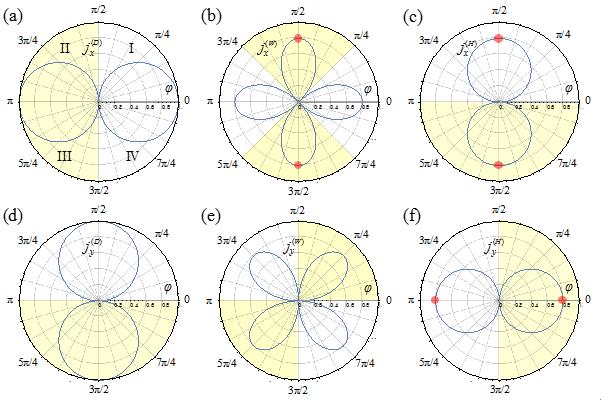Opening a new way to manipulate valley transport by acoustic methods

Credit: IBS
Researchers at the Center for Theoretical Physics of Complex Systems (PCS), within the Institute for Basic Science (IBS, South Korea), and colleagues have reported a novel phenomenon, called Valley Acoustoelectric Effect, which takes place in 2D materials, similar to graphene. This research is published in Physical Review Letters and brings new insights to the study of valleytronics.
In acoustoelectronics, surface acoustic waves (SAWs) are employed to generate electric currents. In this study, the team of theoretical physicists modelled the propagation of SAWs in emerging 2D materials, such as single-layer molybdenum disulfide (MoS2). SAWs drag MoS2 electrons (and holes), creating an electric current with conventional and unconventional components. The latter consists of two contributions: a warping-based current and a Hall current. The first is direction-dependent, is related to the so-called valleys – electrons’ local energy minima – and resembles one of the mechanisms that explains photovoltaic effects of 2D materials exposed to light. The second is due to a specific effect (Berry phase) that affects the velocity of these electrons travelling as a group and resulting in intriguing phenomena, such as anomalous and quantum Hall effects.
The team analyzed the properties of the acoustoelectric current, suggesting a way to run and measure the conventional, warping, and Hall currents independently. This allows the simultaneous use of both optical and acoustic techniques to control the propagation of charge carriers in novel 2D materials, creating new logical devices.
The researchers are interested in controlling the physical properties of these ultra-thin systems, in particular those electrons that are free to move in two dimensions, but tightly confined in the third. By curbing the parameters of the electrons, in particular their momentum, spin, and valley, it will be possible to explore technologies beyond silicon electronics. For example, MoS2 has two district valleys, which could be potentially used in the future for bit storage and processing, making it an ideal material to delve into valleytronics.
“Our theory opens a way to manipulate valley transport by acoustic methods, expanding the applicability of valleytronic effects on acoustoelectronic devices,” explains Ivan Savenko, leader of the Light-Matter Interaction in Nanostructures Team at PCS.
###
Media Contact
Dahee Carol Kim
[email protected]
Related Journal Article
http://dx.




